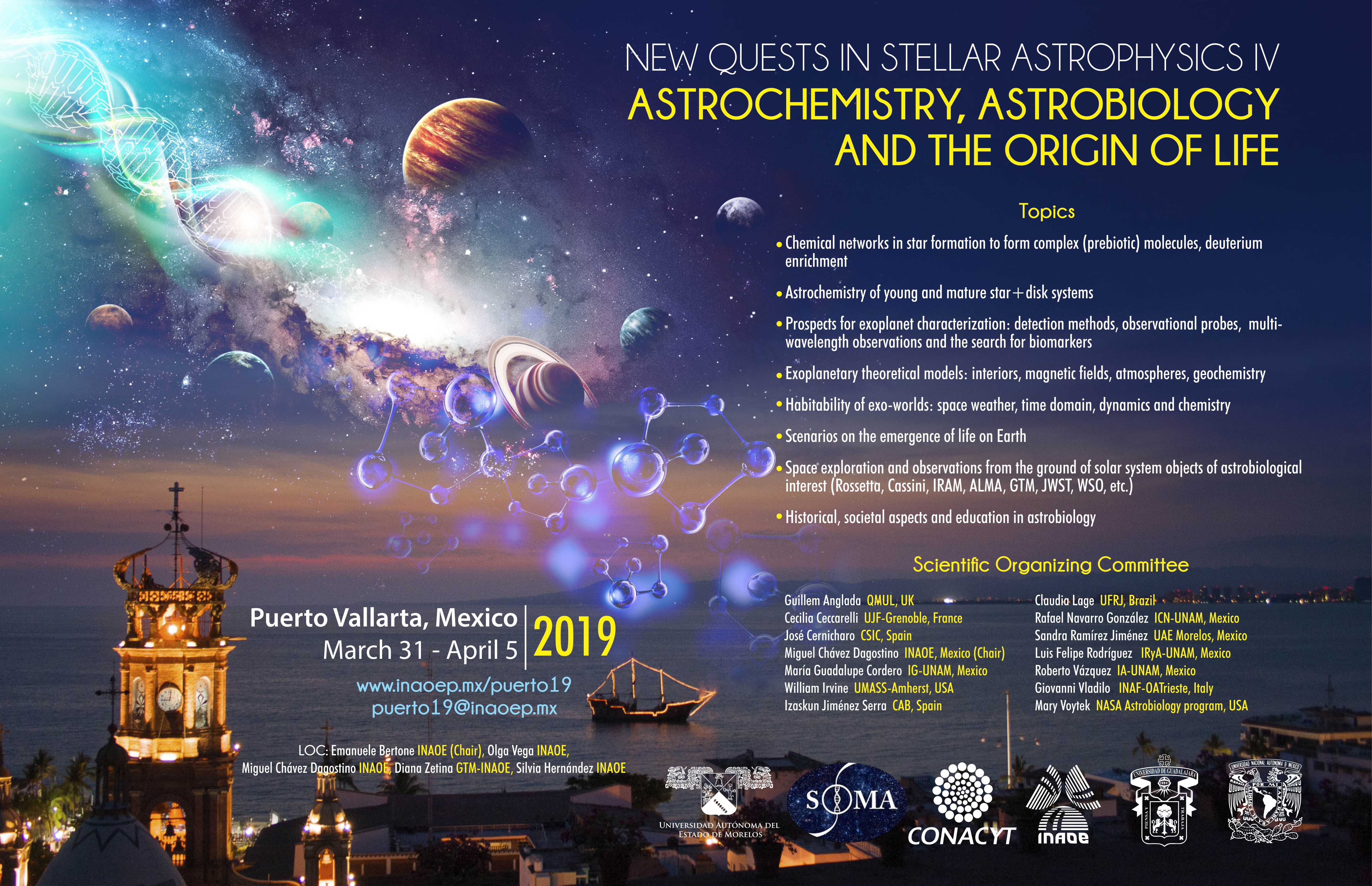NEW QUESTS IN STELLAR ASTROPHYSICS IV
ASTROCHEMISTRY, ASTROBIOLOGY
AND THE ORIGIN OF LIFE
Puerto Vallarta, Mexico: March 31 - April 5, 2019


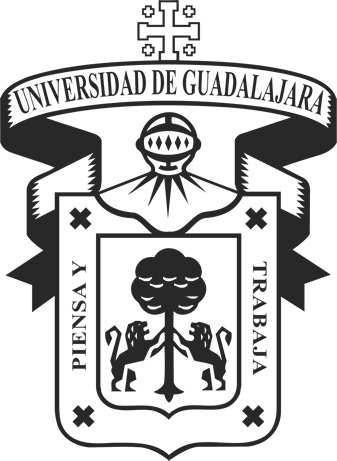
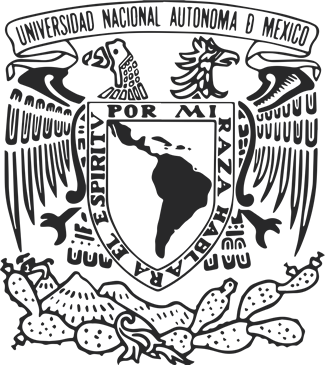
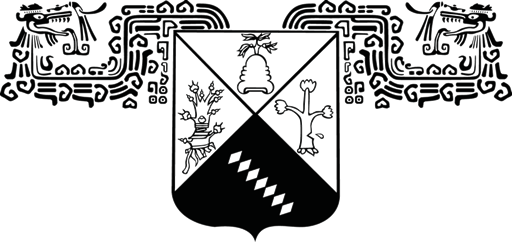
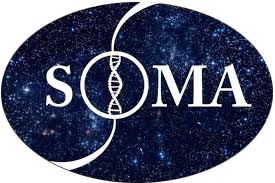
IMPORTANT NEWS:
Dear Participant,
Thank you very much for your participation.
The written hardcopy legacy of our event will be published by the Memorie della Societa Astronomica Italiana (Journal of the Italian Astronomical Society) in the first volume of 2020.
Please Check the link of proceedings information for more detailes.
Puerto Vallarta, Mexico: March 31-April 5 2019
(venue: Hotel Meliá Puerto Vallarta, Mexico)
Rationale:
Among the most fundamental questions of humankind has been whether there are other worlds as our that host life forms, at least as we know them on Earth. The implicit question “Are we alone?” can be traced back to Democritus and Epicurus and has transcended for more than 2000 years. In a time when the ever growing number of confirmed exoworlds has reached more than 3700 and hundreds of analogs of the asteroid and Edgeworth-Kuiper belts in our solar system have been detected with infrared and (sub-)millimeter infrastructures, it is easy to think that finding life beyond Earth seems plausible. Such possibility has triggered enormous multidisciplinary efforts to connect stellar and planet formation processes to the emergence of life in the solar system and possibly in the progeny around other stars.
The two scientific branches of biology and astrophysics are amalgamated through the relative new discipline of Astrobiology that has become one of the most vibrant fields of research. This connection has been enabled and boosted by the availability of new instrumentation from space and from the ground that have deeply impacted our understanding of the properties of celestial bodies in a wide variety of astrophysical scenarios of astrobiological interest. Notably, for instance, Rosetta and Cassini have provided spectacular results on the contents of complex organics in comets and the icyworld Enceladus. Multiwavelength observations of exoplanets and state of the art theoretical models have provided important clues for understanding their atmospheres, and, therefore, on their formation and evolution as well as on the potential presence of biomarkers.
World-class infrastructures sensitive in the (sub-)millimeter, a band particularly rich in molecular transitions, are having and will have a profound impact in studies of the chemical properties and networks associated with different phases in the formation of stars. Studies with the Atacama Large millimeter Array (ALMA) will soon be complemented by the largest single dish millimeter wave antenna, the Large Millimeter Telescope Alfonso Serrano (LMT) that will start operations with its full 50m diameter dish in 2018. The LMT, with its state-of-the-art spectrometers, will provide the sensitivity, resolution, and mapping speed for cutting edge investigations of the organic chemistry of galactic and extragalactic interstellar molecular clouds, protoplanetary disks, material around mature stars, and solar system objects.
This is the fourth of the "New Quests in Stellar Astrophysics” meeting series aimed at stressing the importance of stellar physics to understand the properties of stars, their progeny and stellar systems at different scales. In the first meeting, in 2001, we reviewed the impact of stellar physics on global properties of stellar aggregates up to cosmological scales. In the second meeting, held in 2007, we focused on the UV interval to review our current knowledge on the properties of nearby and distant evolved stellar populations. The conference in 2012 was devoted to the multiwavelength perspective of solar-like (H fueled) stars and addressed some of the important findings related to exoplanet searches. The proposed event for 2019 intends to convene researchers and young scholars from several fields to show the latest results on a number of interdisciplinary topics and enable cross-fertilization between scientists in the various disciplines. It will also be a good opportunity to gain insight into the future instrumentation from the ground and space that will substantially contribute to the exploration of the solar system and beyond in search of clues for understanding how life emerged from cosmic and planetary precursors.
Topics:
- Chemical networks in star formation to form complex (prebiotic) molecules, deuterium enrichment.
- Astrochemistry of young and mature star+disk systems.
- Prospects for exoplanet characterization: detection methods, observational probes, multi-wavelength observations and the search for biomarkers.
- Exoplanetary theoretical models: interiors, magnetic fields, atmospheres, geochemistry.
- Habitability of exo-worlds: space weather, time domain, dynamics and chemistry.
- Scenarios on the emergence of life on Earth.
- Space exploration and observations from the ground of solar system objects of astrobiological interest (Rosetta, Cassini, IRAM, ALMA, GTM, JWST, WSO, etc.).
- Historical, societal aspects and education in astrobiology.
